Pinellas County Artificial Reefs
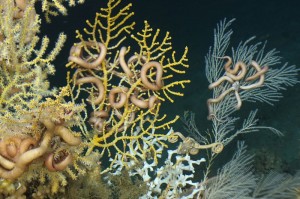 Little known to most tourists at Clearwater Beach, St Pete Beach and the various tourists stops of the Central Gulf Coast are a series of artificial reefs located just off the coast. The reefs vary in distance from the shore, some being only a few hundred yards out while others are as far as 38 miles out in deeper waters. The artificial reef program was started in 1975, growing to the present day total of 42 sites. Most of the reefs, 29 of them, are close to shore. These inshore reefs were set down to help with beach replenishments. After sands were taken from the seafloor to help bolster area beaches between Sand Key and Treasure Island, the reefs were set down at areas where sands were removed. The 13 offshore reef sites are in deeper water and consists of larger materials than those close to the shore.
Little known to most tourists at Clearwater Beach, St Pete Beach and the various tourists stops of the Central Gulf Coast are a series of artificial reefs located just off the coast. The reefs vary in distance from the shore, some being only a few hundred yards out while others are as far as 38 miles out in deeper waters. The artificial reef program was started in 1975, growing to the present day total of 42 sites. Most of the reefs, 29 of them, are close to shore. These inshore reefs were set down to help with beach replenishments. After sands were taken from the seafloor to help bolster area beaches between Sand Key and Treasure Island, the reefs were set down at areas where sands were removed. The 13 offshore reef sites are in deeper water and consists of larger materials than those close to the shore.
Both types of reef share a similar life cycle, growing barnacles and other sedentary sea life within just weeks. Fish arrive soon after to feed on these stationary creatures. Coral completes the reef community around the one year mark.
The purpose of the artificial reef program is to enhance fishing opportunities and to provide diving sites for scuba enthusiasts. The reefs also help to disperse the recreation areas of the Florida Gulf Coast, a very popular vacation destination. The increased number of diving and fishing sites offer visitors and locals greater opportunities for sport and play.
Materials for Gulf Coast Artificial Reefs
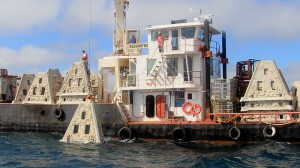 The materials for the Gulf Coast artificial reefs ranges from the unique to the mundane. Many of the reefs are constructed from relatively simple items, such as pipes, pylons, and deconstructed bridge debris. Other sites contain treasures such as sunken barges, sunken ships, and even obsolete military tanks from WWII. The reef building materials have to pass an inspection for hazardous wastes and have to be relatively large in size. While it might seem that builders would simply drop the items into the water and be done, it is not so. The reefs are constructed with careful planning, intentionally creating openings that differ in size. The construction technique creates habitats for the various species that will arrive as the reef matures.
The materials for the Gulf Coast artificial reefs ranges from the unique to the mundane. Many of the reefs are constructed from relatively simple items, such as pipes, pylons, and deconstructed bridge debris. Other sites contain treasures such as sunken barges, sunken ships, and even obsolete military tanks from WWII. The reef building materials have to pass an inspection for hazardous wastes and have to be relatively large in size. While it might seem that builders would simply drop the items into the water and be done, it is not so. The reefs are constructed with careful planning, intentionally creating openings that differ in size. The construction technique creates habitats for the various species that will arrive as the reef matures.
Diving on Florida Gulf Coast Artificial Reefs
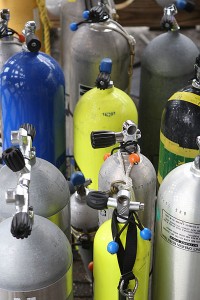 When we questioned divers regarding the artificial reefs of the Gulf Coast we were surprised to find out that even the simple reefs created from construction debris were popular dive sites. It seems that the attraction of many reefs is the sea life that surrounds them. Grouper, sting rays, eels, sea horses, sharks, coral, sponges and more find homes on and around the reefs. Lucky divers might also encounter sea turtles or dolphins. The visibility changes with Gulf conditions, giving views through 15 to 60 feet of water. Unique dive sites include the large barges and fishing boats, which divers can enter. The WWII tanks are also a popular dive.
When we questioned divers regarding the artificial reefs of the Gulf Coast we were surprised to find out that even the simple reefs created from construction debris were popular dive sites. It seems that the attraction of many reefs is the sea life that surrounds them. Grouper, sting rays, eels, sea horses, sharks, coral, sponges and more find homes on and around the reefs. Lucky divers might also encounter sea turtles or dolphins. The visibility changes with Gulf conditions, giving views through 15 to 60 feet of water. Unique dive sites include the large barges and fishing boats, which divers can enter. The WWII tanks are also a popular dive.
Fishing Florida Gulf Coast Artificial Reefs
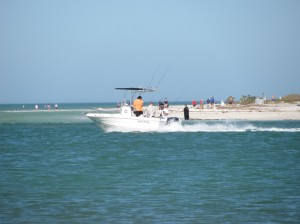 The other inspiration for the artificial reefs on Gulf Coast of Florida is to increase the fishing opportunities. The reefs not only provide good fishing destinations, they also create habitats for bait fish. Fishermen start at the reefs, casting their bait nets to scoop up the smaller fish. They can move on from there or stay, trying for the larger fish that troll the artificial structures below. Some of the more popular fish to catch are grouper, snapper, amberjack, and Spanish mackerel. The reefs closer to the shore are all marked for fishing on the maps, while those in deeper water are designated for mixed use. With the overwhelming popularity of fishing along the Gulf Coast, these new habitats provide additional locations for local fishermen and tourists to cast their lines.
The other inspiration for the artificial reefs on Gulf Coast of Florida is to increase the fishing opportunities. The reefs not only provide good fishing destinations, they also create habitats for bait fish. Fishermen start at the reefs, casting their bait nets to scoop up the smaller fish. They can move on from there or stay, trying for the larger fish that troll the artificial structures below. Some of the more popular fish to catch are grouper, snapper, amberjack, and Spanish mackerel. The reefs closer to the shore are all marked for fishing on the maps, while those in deeper water are designated for mixed use. With the overwhelming popularity of fishing along the Gulf Coast, these new habitats provide additional locations for local fishermen and tourists to cast their lines.
How to Locate Gulf Coast Artificial Reefs
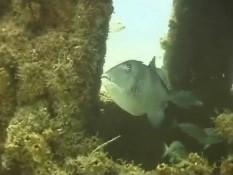 Modern technology makes finding the reefs quite easy. Each one is marked on the official maps, with GPS coordinates included. The intra-coastal waterways of the Florida Gulf Coast are shallow, creating a need for depth finders aboard pretty much every boat that plies the local waters of Clearwater Harbor, Boca Ciega Bay, or St Joseph Sound. Purchasing a GPS to have on board your boat is a good idea, although the more expensive devices come with both depth sonar and GPS. The reef program is no longer creating new sites but those that already exist are being maintained.
Modern technology makes finding the reefs quite easy. Each one is marked on the official maps, with GPS coordinates included. The intra-coastal waterways of the Florida Gulf Coast are shallow, creating a need for depth finders aboard pretty much every boat that plies the local waters of Clearwater Harbor, Boca Ciega Bay, or St Joseph Sound. Purchasing a GPS to have on board your boat is a good idea, although the more expensive devices come with both depth sonar and GPS. The reef program is no longer creating new sites but those that already exist are being maintained. 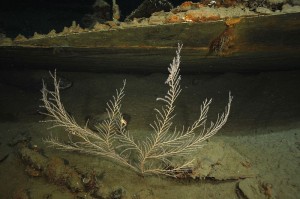 That includes, in a few locations, buoys to mark them. If you are not interested in trying to find the reefs on your own, try a local dive shop. Guided tours will take out to the reefs and allow you to dive. Local fishing charters will know where the reefs are, naturally. It is their job to give the best fishing experience possible, which is an easy task on the Gulf of Mexico.
That includes, in a few locations, buoys to mark them. If you are not interested in trying to find the reefs on your own, try a local dive shop. Guided tours will take out to the reefs and allow you to dive. Local fishing charters will know where the reefs are, naturally. It is their job to give the best fishing experience possible, which is an easy task on the Gulf of Mexico.
Enjoying the Artificial Reefs of the Florida Gulf Coast
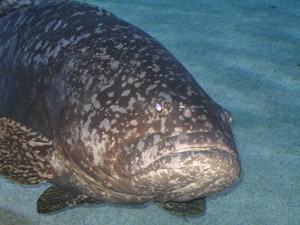 The artificial reefs of the Florida Gulf Coast are there for the enjoyment of fishing and diving, creating locations that would otherwise be unavailable. The artificial reefs supply an added bonus for an area already full of recreation opportunities. With Tampa Bay, Clearwater, and St. Petersburg being very popular Florida vacation destinations, it makes sense to expand the resources. If you are looking to take your Gulf Coast vacation a step further, why not give them a try?
The artificial reefs of the Florida Gulf Coast are there for the enjoyment of fishing and diving, creating locations that would otherwise be unavailable. The artificial reefs supply an added bonus for an area already full of recreation opportunities. With Tampa Bay, Clearwater, and St. Petersburg being very popular Florida vacation destinations, it makes sense to expand the resources. If you are looking to take your Gulf Coast vacation a step further, why not give them a try?
Other posts you might enjoy:
How Big is your Vacation Activity Zone?
Never Confuse a Bayou with a Backwater Again




Leave a Reply
Be the First to Comment!